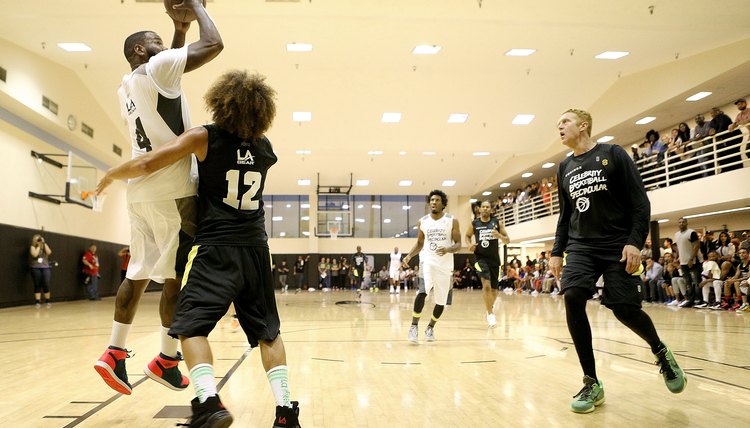The Effects of the Game of Basketball on America

Basketball was invented by Dr. James Naismith in Springfield, Massachusetts, in 1891. Naismith, who later taught at the University of Kansas, had been searching for a game of skill that could be played indoors in a relatively small space during the harsh New England winters. The first game was played with a soccer ball and two peach baskets. The sport is now a worldwide phenomenon; elite players sign multimillion dollar contracts and pro games are shown on national and international channels.
Sports Participation
Basketball is a popular sport in the United States, especially in urban areas where space is limited and playing fields are few and far between. According to a 2001 Gallup poll, 47 percent of Americans consider themselves college basketball fans. Many kids grow up playing in their neighborhood court, on private traveling teams, representing their schools, or a combination of the three. College basketball at the national level offer what many call the most competitive and entertaining games; as a result, offices across the country have competitions or “pools" in which entrants predict which of the initial 64 teams will win the annual NCAA tournament.
African-American Influence
The basketball court also reflected some of the major cultural tshifts in America, such as from segregation to integration. African-Americans weren’t permitted to participate in National Basketball Association games until 1950, when Earl Lloyd played for the Washington Capitals. African-American players had a style of play that, according to the NBA, emphasized “speed, agility, superior jumping ability and creative ball handling,” which today are the hallmarks of the game that millions of Americans love. Wilt Chamberlain and Elgin Baylor were two of the earliest players to show the dominance that Michael Jordan would later be known for. Along with this dominance came the birth of the American sports superstar; because of their worldwide media and commercial profile, these superstars have become ambassadors of America across the globe.
Popular Culture
Basketball also has impacted American culture. The film “Hoosiers,” loosely based on a real-life story of a winning basketball team, garnered Oscar nominations and illustrated how basketball could serve as the focal point for high drama in small towns. Later, “White Men Can’t Jump” about a team of basketball hustlers, was a box office success and also dramatized the role basketball could play in inner-city street life. Michael Jordan’s “Space Jam” illustrated the way that Jordan became a household name even for those for whom basketball meant nothing.
What's In a Name?
Commercial success on the part of Nike, a struggling shoe company in 1984 according to Shoehead.com, can partially also be attributed to Michael Jordan. The Air Jordan sneaker and Jordan’s endorsement paved the way for two American trends: huge endorsement fees for star players and the coveting of equipment endorsed by these star players, often priced much higher than similar-quality competitor brands. The role basketball and its modern prince, M.J., played in the commercialization of sports and sports stars in America should not be be underestimated.
References
Writer Bio
Catalina Logan began writing professionally in 2005. She has been an editor for “Kopa” literary magazine and her work appeared in the publication as well. A fitness and outdoors enthusiast, Logan is a long-distance runner and has scaled the highest peaks of Malaysia and Vietnam. Logan holds a Bachelor of Arts in American studies from Yale University.
